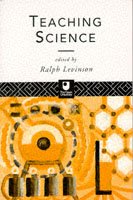Teaching science

Science education has undergone far-reaching changes in the last fifty years. The articles collected together in this reader examine how we have reached our present consensus and what theories we now use to explain how children learn science.
The central sections of the reader examine how all this can be translated into effective and stimulating teaching, how learning can be most accurately and fairly assessed and how the impact of gender, ethnicity and other factors on children's performance can be addressed in methods of teaching which make science accessible to all.
The articles in the final section of the book are a reminder that the debate is not finished yet and raise some challenging questions about what science education is and what it is for.
Show health and safety information
Please be aware that resources have been published on the website in the form that they were originally supplied. This means that procedures reflect general practice and standards applicable at the time resources were produced and cannot be assumed to be acceptable today. Website users are fully responsible for ensuring that any activity, including practical work, which they carry out is in accordance with current regulations related to health and safety and that an appropriate risk assessment has been carried out.





